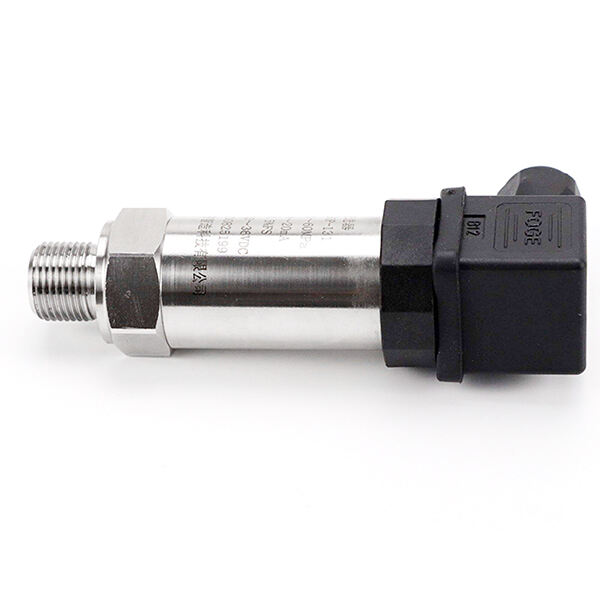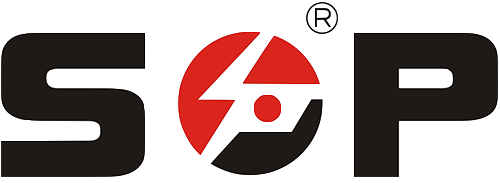Vilka Är De Viktigaste Faktorerna Vid Valet Av En Tryckgivare?
Tryckmätning spelar en avgörande roll i industrier som tillverkningsindustrin, bilindustrin, hälso- och sjukvård, luftfart och miljöövervakning. Enheten i kärnan av exakt tryckmätning är trycksensorn. Oavsett om du konstruerar ett hydrauliskt system, övervakar processledningar i en kemisk anläggning eller säkerställer säkra kabinförhållanden i ett flygplan, är valet av rätt Trycksensor är avgörande för att uppnå tillförlitliga och exakta resultat.
Att välja fel sensor kan leda till felaktiga mätningar, utrustningsfel, säkerhetsrisker och kostsam driftstopp. Den här guiden behandlar de viktigaste faktorerna att ta hänsyn till vid val av trycksensor, hur dessa enheter fungerar, de olika typerna som finns tillgängliga samt de industrier som är beroende av dem. Trycksensor trycksensor, hur dessa enheter fungerar, de olika typerna som finns tillgängliga samt de industrier som är beroende av dem.
Förståelse av vad en trycksensor är
En trycksensor är en enhet som upptäcker tryck i en vätska eller gas och omvandlar denna mätning till ett elektriskt signal som kan visas, övervakas eller användas för styrning. Sensorn mäter den kraft som verkar per areaenhet och kan konfigureras för att mäta absoluttryck, relativtryck eller differentialtryck.
Signalsignalen från en trycksensor kan vara analog eller digital, och är vanligtvis kopplad till ett styrsystem, display eller en datainsamlingsenhet. Trycksensorer är integrerade delar i många säkerhetssystem, effektivitetsövervakningsverktyg och kvalitetskontrollprocesser.
Hur en trycksensor fungerar

Arbetsprincipen för en trycksensor beror på dess teknik, men de flesta följer en liknande process:
Tryckapplikation : En vätska eller gas utövar kraft på sensorns membran.
Avböjningsdetektering : Membranet avböjs under tryck.
Signal konvertering : Denna avböjning mäts med hjälp av mätgivare såsom töjningsgivare, kapacitiva plattor eller piezoelektriska kristaller.
Elektrisk utgång : Den uppmätta förändringen omvandlas till ett elektriskt signal som är proportionell mot den tillämpade trycket.
Till exempel i en tryckgivare baserad på töjningsgivare ändrar membranets avböjning motståndet i töjningsgivarna som är limmade på den. Denna motståndsändring bearbetas sedan till en läsbar utgång.
Typer av tryckgivare
Töjningsgivare för tryckmätning
Använder elektriska motståndsändringar för att mäta tryck. Dessa är tillförlitliga och används flitigt inom industriella applikationer.
Kapacitiva tryckgivare
Mäter förändringar i kapacitans orsakade av membranets avböjning. De erbjuder hög känslighet och låg effektförbrukning.
Piezoelektriska tryckgivare
Genererar en elektrisk laddning som svar på tryckförändringar. Perfekt för att mäta dynamiska tryck i bil- och flygindustrins testverksamhet.
Optiska trycksensorer
Använder ljusbaserade detekteringsmetoder, vilket ger immunitet mot elektromagnetisk störning och lämplighet för hårda miljöer.
MEMS-trycksensorer
Mikroelektromekaniska system som är kompakta, kostnadseffektiva och allmänt använda i konsumentelektronik och medicinska apparater.

Viktiga faktorer vid val av trycksensor
1. Tryckomfång
Den valda trycksensorn måste klara hela tryckintervallet som förväntas i din applikation utan skador. Det rekommenderas att välja en sensor som är märkt för minst 1,5 gånger det maximala drifttrycket för att undvika överbelastning.
2. Trycktyp
Absolut tryck : Mäts i förhållande till ett perfekt vakuum.
Trycktryck : Mäts i förhållande till omgivningens atmosfäriska tryck.
Differenstryck : Mäter skillnaden mellan två tryckpunkter.
Att välja rätt typ är avgörande för exakt mätning.
3. Noggrannhetskrav
Sensorns noggrannhet bör uppfylla kraven i din applikation. Exakta applikationer som medicinsk utrustning eller vetenskaplig forskning kan kräva noggrannheter på ±0,1 % eller bättre, medan mindre kritiska processer kan tillåta högre toleranser.
4. Typ av utgångssignal
Trycksensorer kan generera analoga signaler (spänning eller ström) eller digitala signaler (t.ex. I²C, SPI, CAN-buss). Valet beror på kompatibilitet med ditt styrsystem och datahanteringsbehov.
5. Miljöförhållanden
Extrema temperaturer, fuktighet, vibrationer och exponering för frätande vätskor kan påverka sensorns prestanda. Leta efter sensorer med lämplig täthet (IP-klassning), korrosionsbeständighet och temperaturkompensation.
6. Mediumskompatibilitet
Se till att sensorns våta material är kompatibla med den vätska eller gas som mäts för att förhindra korrosion eller nedbrytning. Till exempel är rostfritt stål lämpligt för många vätskor, medan specialbeläggningar kan krävas för aggressiva kemikalier.
7. Svarstid
I dynamiska system, såsom motormätning eller pneumatisk styrning, måste sensorns svarstid vara tillräckligt snabb för att exakt kunna fånga hastiga tryckförändringar.
8. Storlek och monteringsalternativ
Sensorn måste passa inom det tillgängliga utrymmet och vara kompatibel med din monteringskonfiguration. Kompakta design är ofta nödvändiga i bärbara enheter eller trånga installationer.
9. Långsiktig stabilitet och drift
Med tiden kan en sensors utgång vandra på grund av materialutmattning, miljöfaktorer eller komponenternas åldrande. Välj en trycksensor med låg driftkaraktäristik för applikationer som kräver långsiktig tillförlitlighet.
10. Kostnad och livscykelvärde
Även om kostnad är en viktig faktor, kan det billigaste alternativet inte erbjuda den hållbarhet, precision eller livslängd som krävs. Tänk på totala ägandekostnaden, inklusive underhåll och utbyte.
Vanliga applikationer för trycksensorer
Industriell Automation
Trycksensorer används i hydrauliska och pneumatiska system för realtidsövervakning och kontroll.
Bilsystem
Från övervakning av trycket i däcken till bränsleinsprutningssystem säkerställer sensorerna optimal prestanda och säkerhet.
Flyg- och rymdindustri
De övervakar kabintrycket, hydrauliska system och motorns prestanda i flygplan.
Hälso- och sjukvårdsutrustning
Används i ventilatorer, blodtrycksmätare och infusionspumpar för patientvård och säkerhet.
Miljöövervakning
Mäter barometertrycket för väderprognoser och klimatstudier.
Energi och elproduktion
Övervaka ångtryck i turbiner, oljerörledningar och förnybara energisystem.
Fördelar med att använda rätt trycktransmitter
Förbättrad noggrannhet och kontroll : Säkerställer att system fungerar inom säkra och effektiva parametrar.
Förbättrad säkerhet : Förhindrar farliga övertrycksförhållanden.
Minskad stilleståndstid : Pålitliga sensorer upptäcker problem tidigt och möjliggör förebyggande underhåll.
Data för optimering : Exakta trycksdata stöder processförbättringar och effektivitetsvinster.
Innovationer inom trycktransmittrar
Trådlösa trycktransmitter
Eliminera kablage och möjliggör fjärrövervakning i svåråtkomlig eller roterande maskineri.
Smart Sensorer
Kombinera tryckmätning med temperaturmätning, diagnostik och självkalibrering.
Miniaturisering
MEMS-teknik möjliggör extremt små sensorer för bärbara och påkroppsliga enheter.
Lösningar för hårda miljöer
Nya material och beläggningar förbättrar prestanda i högtemperatur-, högvibrations- eller korrosiva miljöer.
Så här underhåller du en trycksensor
Regelbunden kalibrering för att upprätthålla noggrannhet.
Rengör sensorportar och membran för att förhindra blockering.
Skydda mot mekanisk chock och övertryck.
Kontrollera elektriska anslutningar och signaintegritet.
Framtidens trycksensorer
Med tillväxten inom Industry 4.0, IoT och avancerad automation kommer trycksensorer att utvecklas mot ökad anslutningsförmåga, intelligens och tillförlitlighet. Räkna med fler sensorer med inbyggd trådlös kommunikation, AI-drivna diagnostikfunktioner och förbättrad motståndskraft mot miljöpåverkan.
Vanliga frågor
Vad används en trycksensor till?
Den mäter trycket hos gaser eller vätskor och omvandlar det till ett elektriskt signal för övervakning eller styrning.
Hur väljer jag rätt trycksensor för min applikation?
Beakta faktorer såsom tryckomfång, typ, noggrannhet, utgångssignal, miljöförhållanden och kompatibilitet med medium.
Kan en trycksensor mäta både vätska och gas?
Ja, så länge sensormaterialen är kompatibla med mediet.
Hur noggranna är trycksensorer?
Noggrannheten beror på sensorns design, där vissa erbjuder ±0,1 % av fullskale eller bättre.
Vad är skillnaden mellan absoluta, relativa och differenstrycksensorer?
Absoluta mätningar mot vakuum, manometriska mätningar mot atmosfäriskt tryck och differentialmätningar mellan två punkter.
Behöver trycksensorer kalibreras?
Ja, periodisk kalibrering säkerställer långsiktig mätprecision.
Kan trycksensorer fungera i högtemperaturmiljöer?
Ja, men de måste vara godkända för det specifika temperaturintervallet och kan behöva kylning eller kompensation.
Innehållsförteckning
- Vilka Är De Viktigaste Faktorerna Vid Valet Av En Tryckgivare?
- Förståelse av vad en trycksensor är
- Hur en trycksensor fungerar
- Typer av tryckgivare
- Viktiga faktorer vid val av trycksensor
- Vanliga applikationer för trycksensorer
- Fördelar med att använda rätt trycktransmitter
- Innovationer inom trycktransmittrar
- Så här underhåller du en trycksensor
- Framtidens trycksensorer
-
Vanliga frågor
- Vad används en trycksensor till?
- Hur väljer jag rätt trycksensor för min applikation?
- Kan en trycksensor mäta både vätska och gas?
- Hur noggranna är trycksensorer?
- Vad är skillnaden mellan absoluta, relativa och differenstrycksensorer?
- Behöver trycksensorer kalibreras?
- Kan trycksensorer fungera i högtemperaturmiljöer?
